Optimizing your website’s content for SEO can seem like a daunting task, especially if you’re just starting out. But don’t worry! By the end of this guide, you’ll have a firm grasp of some of the most effective strategies you can use to improve your SEO ranking. Let’s dive in!
Identify Keywords to Maximize SEO Opportunities
The first step to optimizing your content for SEO is identifying the right keywords. Keywords are words or phrases that people use to find content on search engines. They are crucial to driving targeted traffic to your website.
When it comes to keyword research, there are various strategies you can employ. Start by thinking about the topics that your audience is interested in. Consider their needs, wants, and pain points. Understanding your audience’s motivations will help you identify the keywords that will resonate with them.
Once you have a general idea of the topics, it’s time to dive deeper into keyword research. Keyword research tools allow you to enter a specific topic or keyword and it provides you with a list of related keywords along with their search volumes and competition levels. This information can help you prioritize which keywords to target.
When analyzing keywords, it’s important to consider the competitiveness (difficulty) of each keyword. Highly competitive keywords may be difficult to rank for, especially if you have a new or small website. That’s why it’s often beneficial to focus on long-tail keywords.
Long-tail keywords are longer and more specific phrases that are less competitive. While they may have lower search volumes compared to broader keywords, they tend to attract more targeted traffic and have a higher conversion rate. For example, instead of targeting the keyword “shoes,” you could target the long-tail keyword “comfortable running shoes for women.”
Once you have a list of keywords, it’s time to incorporate them into your content. However, it’s important to avoid keyword stuffing. Keyword stuffing refers to the practice of excessively using keywords in an unnatural way, solely for the purpose of ranking higher in search engines. This can negatively impact your SEO efforts and make your content appear spammy.
Instead of keyword stuffing, aim for natural keyword usage throughout your content. Incorporate keywords into your headings, subheadings, and body paragraphs in a way that makes sense and enhances the overall readability of your content. Remember, the purpose of your content is to provide value to your audience, not just to rank high in search engines.
By identifying the right keywords and incorporating them naturally into your content, you can maximize your SEO opportunities and attract targeted traffic to your website. Remember to regularly review and update your keyword strategy to stay relevant and competitive in the ever-evolving world of SEO.

Utilize Internal Linking Strategies
Internal linking refers to the practice of linking your website’s pages together. This is beneficial for both SEO and user experience. When you link to relevant pages on your website, you encourage users to spend more time browsing your content, which can lead to better SEO rankings.
In addition to improving SEO rankings, internal linking also helps in organizing and structuring your website’s content. By strategically linking related pages, you create a logical flow and make it easier for users to navigate through your website. This can enhance the overall user experience and keep visitors engaged for longer periods of time.
When implementing an effective internal linking strategy, it is important to consider the relevance and context of the links. Simply adding links for the sake of it may not provide much value. Instead, focus on linking to pages that provide additional information or expand on the topic being discussed.
For instance, if you’re writing a blog post about baking cookies, you might link to another post on your website about the best types of flour to use for baking. This not only adds depth to your content but also guides users to relevant information that can enhance their understanding and knowledge.
Another aspect to consider when utilizing internal linking strategies is the anchor text used for the links. Anchor text refers to the clickable text that is used to link to another page. It is important to use descriptive and keyword-rich anchor text that accurately represents the content of the linked page. This helps search engines understand the context and relevance of the linked page, further improving SEO rankings.
Furthermore, internal linking can also help search engine crawlers discover and index your website’s pages more effectively. When you interlink your pages, it creates a network of interconnected content that search engines can follow, ensuring that all your valuable pages are indexed and accessible to users.
It is worth noting that while internal linking is beneficial, it should be done in a natural and organic manner. Avoid excessive linking or using irrelevant anchor text, as this can be seen as spammy by search engines and may negatively impact your SEO efforts.
Optimizing Images for SEO
When it comes to SEO, it’s not just the text that matters—images play a crucial role too. Large, high-quality images can slow down your website’s load time, which can hurt your SEO ranking.
To optimize your images for SEO, start by compressing your files to reduce their size, 100KB or less is recommended. You can use tools like Adobe Photoshop or online compressors. Also, don’t forget to add alt text to your images—this is a description of the image that helps search engines understand what the image is about.
Optimizing SEO Title
The title of your webpage is one of the first things people see when they come across your content in search results. A compelling, keyword-optimized title can significantly improve your click-through rate.
To optimize your SEO title, make sure it includes your target keyword, ideally near the beginning. Keep it under 60 characters to ensure that it doesn’t get cut off in search results.
You can use a helpful tool like an SEO title length checker. These tools allow you to input your title and instantly see its character count.
Optimize Meta Description
The meta description is a brief summary of your webpage that appears below the title in search engine results. While it doesn’t directly impact your SEO ranking, a well-written meta description can improve your click-through rate, which can indirectly boost your SEO. Think of it like your “free advertisement”.
To ensure your meta description aligns with best practices, you can employ a valuable tool called a meta length checker. This tool enables you to input your meta description and promptly assess its character count. It’s essential to keep your meta description under 160 characters to ensure it displays fully in search engine results and doesn’t get cut off, providing users with a clear and compelling snippet of your webpage’s content.
Optimize Additional Headers
Lastly, don’t forget about optimizing your H2, H3, and other headers within your content. These headers help break up your content into digestible sections and improve its readability.
Try to include your target keyword in at least one subheading. It is important to make your subheadings compelling and informative—they should provide a clear outline of your content and encourage users to keep reading.
Follow these strategies to optimize your content for SEO, and you’ll likely see an improvement in your website’s visibility, traffic, and overall performance.





